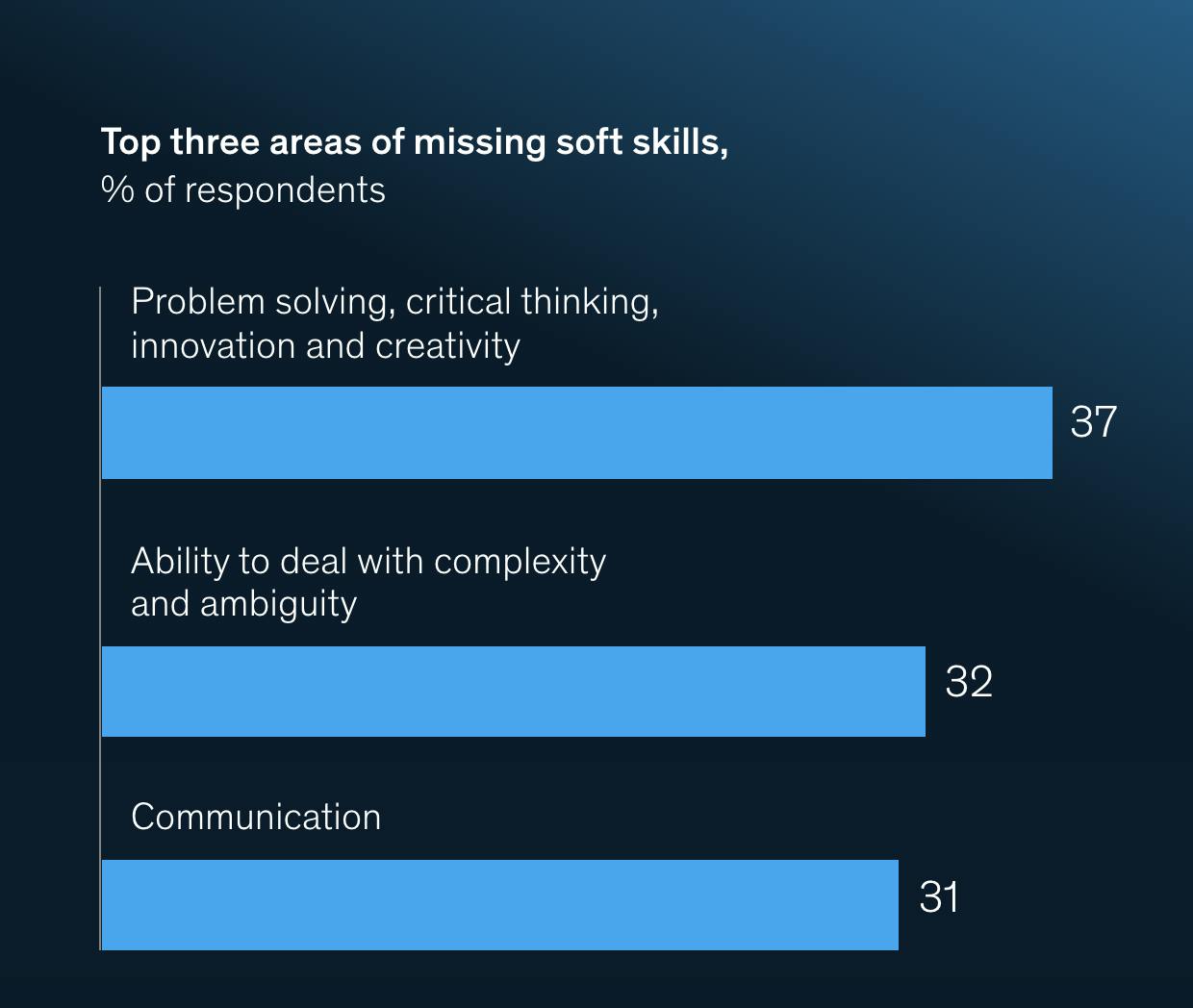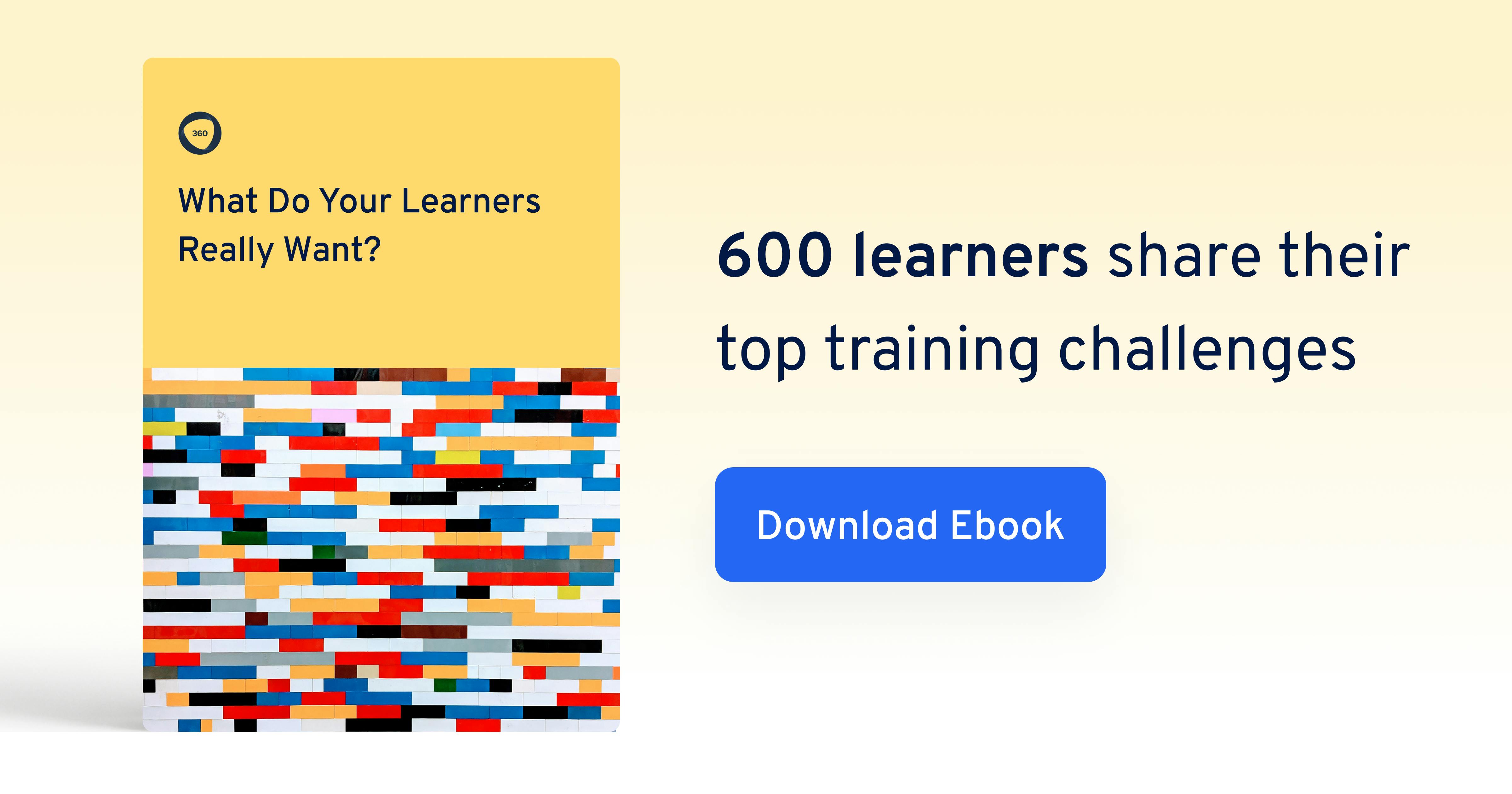
UK L&D: Is Your One-Size-Fits-All Approach to Employee Development Failing? Here's What to Do Instead
With the business world still feeling the effects of the Great Resignation, employee satisfaction and retention have become a hot topic for HR teams across the country. And employee development has shown to be a vital tool for companies hoping to achieve higher retention among their employees.
But like everything else in our professional lives, our expectations for employee development have changed dramatically over the past few years. The old ways no longer cut it. HR professionals must focus on holistic, personalised, and flexible employee development to find success in the post-pandemic work environment.
In the UK, 69% of workers are prepared to leave their current jobs. The number of job vacancies surpassed a million in August 2021, the highest number of open jobs the country has ever seen.
And employees aren’t just walking away from bad bosses and mundane tasks. They are avoiding inadequate opportunities altogether, opting instead to wait until they find an organization with a company culture focused on all-around employee development with a clear path for personal growth.
Great employee development strategies—employee development that attracts and retains talent—is about continuous and personalised learning. It is about providing employees with individualised opportunities that unlock their unique potential and equip them to grow and thrive—which is precisely why a one-size-fits-all approach to employee development will always fall flat.
Here, we will explain five ways your organisation can build a better employee development program that truly stand out.
1. Shift to a bottom-up approach to employee development
Shifting to a bottom-up approach to creating development plans means collaborating with each employee on their individual growth path rather than giving them preset development plans—a top-down model.
When employees are co-architects of their own development (rather than passive receivers), it becomes much easier to feel more engaged and accountable. Employees prefer a bottom-up approach because they can communicate their own learning and development needs, which is essential for shaping their progress.
Together, employees and supervisors can create personalised opportunities and avenues that will fulfil the employee’s vision of their own development—and frankly, this approach is easier for managers because they no longer have to guess the areas in which an employee would like to progress.
To truly collaborate on employee development goals through a bottom-up approach, publish development criteria for promotions in your company wiki, so it becomes public knowledge throughout the company. You can also use a Collaborative Learning platform to help employees set up customised pathways related to the career path most interesting to them.
Adopting a bottom-up approach is ultimately about discovering what your employees want from their careers. This is a crucial step in enabling great employee development programmes.
Want to learn more about what employees want to learn about what and how they want to learn? We interviewed over 600 employees and asked them exactly this. You can read the full report here.

We surveyed 600 learners. This is what they said.
By providing your contact info, you agree to receive communications from 360Learning. You can opt-out at any time. For details, refer to our Privacy Policy.
2. Personalise employee development plans with deeper conversations
Employees are looking for holistic development that helps them find purpose in their work and aligns with their interests. But for far too long, employee development plans have been reduced to a template. This cookie-cutter approach doesn’t work because each employee has unique interests, ambitions, and skillsets.
A rigid training program tries to fit all employees into one box. But not everyone will fit neatly into that box, negatively impacting employee engagement and employee retention.
Instead, get employees excited and engaged about their development by customising their growth. Your employees are the best source of information—ask them about their past experiences, current skills, and future goals during check-ins.
Russ Laraway, the co-founder of Candor Inc., recommends having three career conversations with team members to create a professional development plan that’s tailor-made for each:
- Dig into the past: A person’s past experiences are illuminating. Laraway recommends going as far as pre-school to learn about their interests, strengths, and motivators. In one instance, he learned that a direct report switched from cheerleading to swimming in high school, which led to a deeper conversation about how she valued the tangible outcomes from swimming, like reducing swim times and getting to the podium.
- Learn about their dreams: This isn’t about getting employees to commit to a 10-year plan. Instead, Laraway says, “spot their lighthouse and bring it into focus”—ask questions about their career goals and their vision for the future, whether it is starting their own company or cultivating a farm. This helps you equip employees with transferrable skills—skills they will use today in your organisation as well as when they need to set up that farm.
- Collaborate on an action plan: Craft an action plan based on your shared understanding of the employee’s key motivators and vision for the future by creating learning experiences that meet their specific needs.
3. Establish clear, measurable development pathways
52% of millennials view career progression as a top priority and are attracted to employers that fulfill this need. A well-defined path has goals and learning opportunities that assure employees of an intended outcome, whether it is moving into a managerial position or a completely new role.
To provide more clarity, focus on a skills-based approach to progress and measure them by encouraging employees to set OKRs (Objectives and Key Results). This means that an employee progresses when they learn a tangible new skill or perform a specific task related to their objective.
Some employers have already adopted a skills-based approach right at the hiring stage, which means they advertise skills and responsibilities instead of qualifications in job postings. This helps new employees envision their progress even as they interview with a company.
Another way to establish clear development pathways is with SMART goals, which stand for Specific, Measurable, Achievable, Relevant, and Time-Bound goals, that determine development opportunities based on the execution of those goals.
4. Include soft skills in employee development plans
92% of recruiters say that soft skills in a candidate are as much or more important than hard skills. Soft skills came into even greater focus during the pandemic as employees had to learn new ways to connect and collaborate. It’s true—employees want to develop soft skills like emotional intelligence, empathy, active listening, and conflict resolution to navigate work relationships better.
Yet, this area of development has been neglected in the past, with the result that recruiters now report the skills gap in problem-solving, critical thinking, innovation, and creativity among the top areas of missing soft skills when hiring new employees. This is partly because soft skills are harder to measure and quantify, and companies rely on asking behavioural questions and reading body language when assessing candidates.
However, thanks to newer AI-based assessments like Koru, Pymetrics, and Plum, companies can measure soft skills more systematically and see candidates’ soft skills in action as they complete trial projects.
To create effective employee training for upskilling current and future employees in soft skills, employers can take a blended approach with a mix of synchronous and asynchronous digital courses, peer coaching, and job aids. For example, a retail firm in Europe distributed virtual reality headsets to employees to give them a feel for what a Black Friday sales day would look like and how they could use soft skills to serve customers better. Another firm incentivised soft skills training by awarding digital badges to employees who completed training programmes and gained competencies in a particular skill.
5. Provide employees with coaches for continuous development
45% of managers don’t have the confidence to help employees develop the skills they need. This is because managers themselves often haven't been trained in how to coach their teams and strengthen their career development.
In a research project conducted by Harvard Business Review, managers who were not trained in how to coach their direct reports performed poorly when it came to recognising team members’ strengths and letting them arrive at their own solutions. When managers don’t recognise what their team members are good at, it’s harder to help them progress.
Fortunately, the same research project revealed that managers don’t need months of training to improve their coaching skills. Encourage managers to conduct practice sessions in a safe environment with a mock coachee. Managers can also come together to share peer feedback on each other’s coaching skills and point out areas for improvement.
If your organisation can afford it as a perk, provide employees with professional coaches through a platform like BetterUp. Coaching is shown to have a positive impact on self-confidence, well-being, and employee performance. A professional coach helps employees find purpose and clarity to bring their best selves to work and reach peak performance.
Make employee development less transactional, more human
As the pandemic lingers on, so does employees’ resolve to prioritise their own growth and work-life balance. Amid the lengthy discussions about the future of work, there is an extraordinary opportunity for employers to lead with empathy and take a human approach to employee development.
If you’re an L&D or human resources professional looking to better understand the changing employee development landscape—and understand exactly what your learners need to adjust and thrive—you can download the full report, here.



